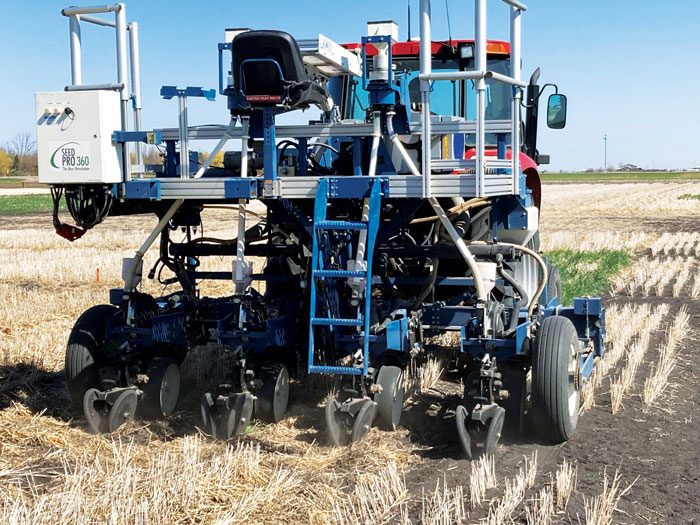Farmers who decide to plant a cover crop have multiple seeding options available. However, Sara Bauder contends that drilling remains the most reliable choice.
“Drilling is likely the most efficient way we can plant a cover crop because we get good seed-to-soil contact,” says Bauder, an agronomy field specialist with South Dakota State University. “Broadcasting is more dependent on timely rains to get seed started. Also, there is typically a poorer germination rate expected so you end up putting out more seed.”
Hans Kandel is a crop agronomist with North Dakota State University, and he agrees that the benefits of drilling outweigh those of broadcasting seed.
“If there is some moisture [in the soil] for the plant to establish, drilling will give you a more uniform establishment of crops,” he says. “Broadcast is oftentimes very random, and there are whole areas in the field where nothing germinated. It’s hit and miss.”
Here are 6 tips for seeding covers with a grain drill.
1. Proper Setup
One concern farmers have about drilling cover crop seed is managing excess crop residue, but Bauder says that can be easily addressed.
“Typically, if we set our drill or planter appropriately, we can plant through the residue without huge issues,” says Bauder. She recommends farmers take time to check that disc openers are sharp, residue management settings are appropriate, closing wheels are in good shape and down-pressure settings are sufficient to ensure the intended seed depth is reached.
2. Keep Residue in Mind
Bauder also says it can be helpful to keep residue in mind when selecting which crops to plant.
“Some plants have more moisture and break down faster, reducing the concern of too much residue,” she says. “Brassicas — like radish, rapeseed and turnip — tend to break down faster in the fall than some other cover crops.”
3. Consider the Timing
Appropriate timing is imperative when drilling cover crop seed, Kandel says, but that timeframe changes from region to region.
“You need to have as many growing days as possible for anything that is planted and will winter kill, because the relationship between how much biomass is produced and the days of growth is very strongly correlated,” Kandel says.
4. Mix Seeds on the Go
There’s a recent movement toward mixing species of cover crops, but Kandel says this can pose a different challenge to farmers.
“If you put together a rye seed that’s long, and a brassica which is round, they will separate out because of the seed size,” he says. “ One solution, Kandel says, is using multiple seed bins so the seeds mix on the go.
5. Focus on Goals
While it may be challenging to appropriately plant a multi-species mix, Bauder says it can be beneficial, depending on the farmer’s objectives.
“In many cases, a mix can help spread risk and provide nice diversity,” she says. “However, sometimes a producer has a very specific goal in mind that a single species might be appropriate for.”
6. Calibrate Your Drill
Even when farmers rely on a single species, it’s imperative that their drill is properly calibrated to make sure it’s distributing the desired amount of seed across all the openers, Kandel says.
“You can’t just take the drill out and go planting,” he says. “It always needs to be adjusted to the seed that you plant, and then it needs to be adjusted for the depth. If you go for a small seed, you typically need to seed a little shallower than a corn or a soybean.”
How to Calibrate a Seed Drill
Don’t waste seed — or time — speculating whether or not your grain drill is seeding at the right rate. Learn this easy way to calibrate your drill every time you use it. Click here





Post a comment
Report Abusive Comment